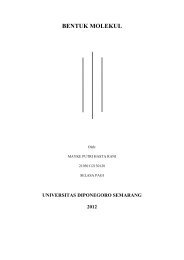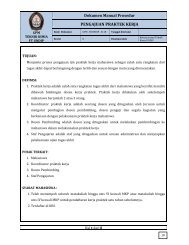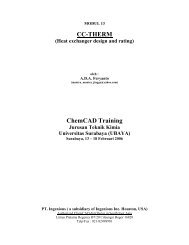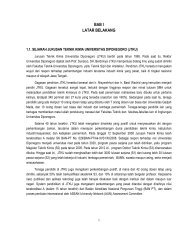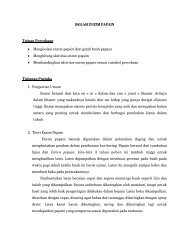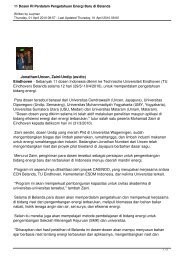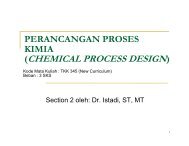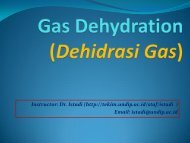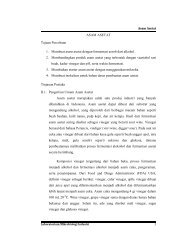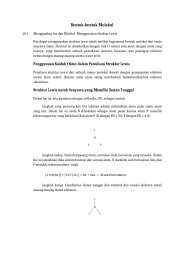Alkylation of Benzene by Propylene to Cumene 6
Alkylation of Benzene by Propylene to Cumene 6
Alkylation of Benzene by Propylene to Cumene 6
- No tags were found...
You also want an ePaper? Increase the reach of your titles
YUMPU automatically turns print PDFs into web optimized ePapers that Google loves.
6.8 Conclusions 199Figure 6.16 Temperature and concentration pr<strong>of</strong>i les in a catalytic distillation column.as steam <strong>of</strong> 6 bar. Very low pressure steam may be raised in (C - 2) and upgraded<strong>by</strong> compression <strong>to</strong> ensure the heat for the column (C - 1). The high - temperaturehot utility is needed only for the vacuum distillation columns.In conclusion, compared with the previous design the flowsheet based on reactivedistillation appears <strong>to</strong> be more economical as hardware and more efficientfrom an energy - integration viewpoint. However, the premise <strong>of</strong> feasibility is theavailability <strong>of</strong> a catalyst with superior properties in terms <strong>of</strong> activity and selectivitycompared with those used in a liquid - phase reac<strong>to</strong>r.6.8ConclusionsAn efficient process can be designed for the manufacturing <strong>of</strong> cumene <strong>by</strong> thealkylation <strong>of</strong> benzene <strong>by</strong> making use <strong>of</strong> zeolite catalysts available <strong>to</strong>day. Simpleadiabatic reac<strong>to</strong>r technology is appropriate, but the operating pressure should besufficiently high <strong>to</strong> ensure only liquid - phase reaction. To limit the formation <strong>of</strong><strong>by</strong>products <strong>by</strong> consecutive polyalkylation a large ratio benzene/propylene is used,which in turn implies large benzene recycle and considerable energy consumption.The energy spent for benzene recycling can be reduced considerably <strong>by</strong> heatintegration, namely <strong>by</strong> double - effect distillation. In addition, the heat developed<strong>by</strong> reaction can be advantageously recovered as medium - pressure steam. Theperformance indices <strong>of</strong> the conceptual design based on literature data are in agreementwith the best technologies.A modern alternative is the use <strong>of</strong> reactive distillation. At first sight appealing,this raises a number <strong>of</strong> problems. The reaction rate is considerably reduced withrespect <strong>to</strong> a homogeneous liquid process because <strong>of</strong> the lower propylene concentrationdue <strong>to</strong> phase equilibrium. In addition, the countercurrent flow <strong>of</strong> reactants



